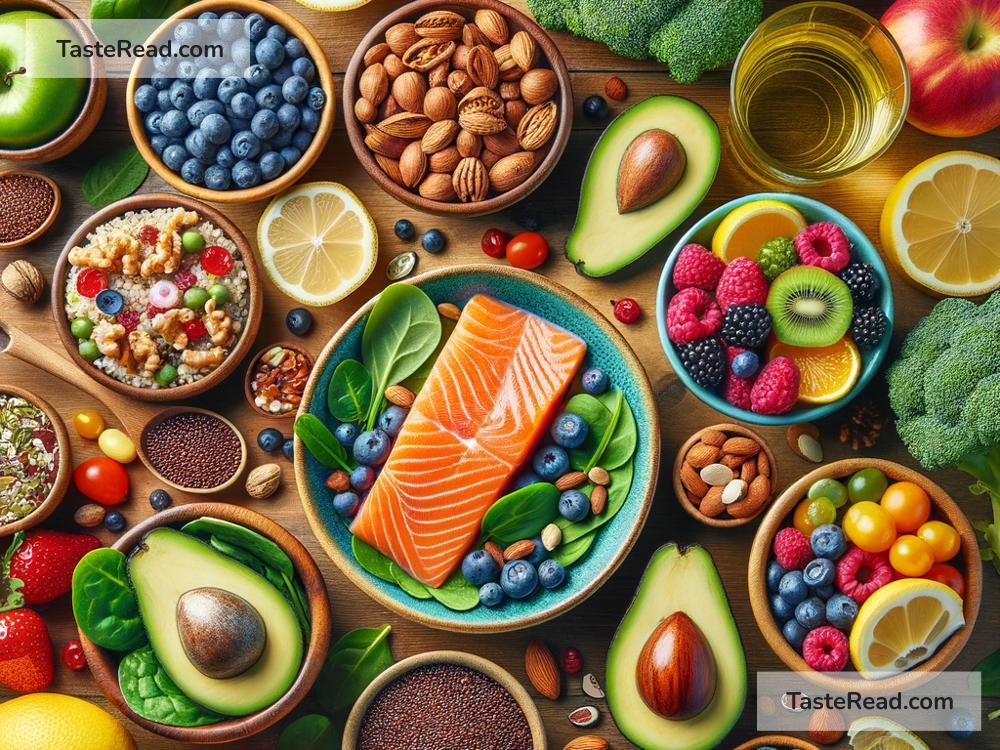Foods for Reducing Obesity Risk: Eat Your Way to a Healthier You
Obesity is a growing concern around the world, affecting millions of people of all ages. It can have negative effects on your health, increasing the risk of problems like diabetes, heart disease, and even some types of cancer. While many factors, including exercise and lifestyle, play a role in managing obesity, the food we eat is one of the most important. Choosing the right foods can help reduce obesity risk and improve overall health. In this blog, we’ll explore simple and healthy foods that can help keep your weight in check.
1. Veggies Are Your Best Friend
Vegetables are packed with nutrients and are low in calories, making them perfect for those trying to lose or manage weight. They are rich in fiber, which keeps you feeling full for longer. When you aren’t constantly hungry, you’re less likely to reach for unhealthy snacks. Here are some vegetables you can include in your meals:
- Leafy greens: Spinach, kale, and lettuce are full of vitamins and extremely low in calories.
- Cruciferous vegetables: Broccoli, cauliflower, and cabbage are rich in fiber and antioxidants.
- Pumpkin and zucchini: These have high water content, which helps keep you hydrated, filled, and satisfied.
Adding vegetables to your plate doesn’t need to be boring. Try steaming, roasting, or grilling them with spices for extra flavor.
2. Whole Grains for Energy and Satiety
Unlike refined grains found in white bread and pastries, whole grains are full of fiber, which helps control appetite and keeps your digestive system healthy. Swap out white rice, pasta, and bread with whole-grain alternatives like:
- Brown rice
- Quinoa
- Oats
- Whole-grain bread
Whole grains digest slowly, preventing sudden spikes and crashes in blood sugar levels. This can help you stay energized and curb overeating.
3. Lean Proteins for Muscle and Metabolism
Proteins are essential for building muscles and repairing cells. They also play a big role in weight management because they promote feelings of fullness and support a healthy metabolism. Choose lean protein sources to avoid extra calories and unhealthy fats. Some great options include:
- Chicken breast
- Turkey
- Fish like salmon and tuna
- Eggs
- Plant-based proteins: Beans, lentils, tofu, and chickpeas work wonders.
Pair your protein with healthy sides like vegetables or whole grains for a balanced meal!
4. Fruits: Sweet and Satisfying
Fruits are nature’s candy—they’re naturally sweet, delicious, and full of nutrients. While fruits contain sugar, it’s natural sugar, paired with fiber, making them a healthy choice. Some fruits particularly helpful for weight management are:
- Berries: Blueberries, strawberries, and raspberries are low in calories and high in antioxidants.
- Apples and pears: Loaded with fiber and water, they’ll keep you full.
- Citrus fruits: Oranges, grapefruits, and limes are refreshing and rich in Vitamin C.
- Bananas: Provide healthy energy for workouts or busy days without weighing you down.
Instead of reaching for chocolates or cookies, grab a piece of fruit to satisfy your sweet tooth.
5. Healthy Fats Are Good for You
Not all fats are bad for your health. Healthy fats like those from nuts, seeds, and avocados can support weight management and improve heart health. They can make meals more satisfying, which prevents overeating. Include small portions of these foods:
- Avocado: Use it in salads or on toast for a creamy, filling addition.
- Nuts and seeds: Snack on almonds, walnuts, chia seeds, or sunflower seeds.
- Olive oil: Use it for cooking or as a dressing for salads.
Remember, moderation is key when consuming fats, even healthy ones.
6. Low-Fat Dairy for Calcium and Protein
Dairy can be a valuable part of a weight-loss-friendly diet, as long as you opt for low-fat or unsweetened options. These provide calcium and protein without the extra calories. Some good choices include:
- Low-fat yogurt: Look for plain yogurt and add fruits or nuts for taste.
- Skim milk: Swap whole milk for this lighter alternative.
- Cottage cheese: High in protein and great for mixing with veggies or spices.
7. Drink Water and Tea for Hydration
While not technically food, what you drink makes a big difference in managing weight. Sugary drinks like sodas and juices add unnecessary calories to your day. Instead, focus on:
- Water: This should be your go-to drink! It hydrates and fills you up without adding calories.
- Green tea: Rich in antioxidants and may help boost your metabolism.
- Black coffee: If you need caffeine, skip the cream and sugar.
Final Tips for Eating Healthy
Reducing the risk of obesity doesn’t happen overnight, but small changes in your diet can make a big difference over time. Here are some tips to help:
- Watch portion sizes. Eat slowly, paying attention to when you feel full.
- Avoid processed foods. These are often high in calories and unhealthy fats.
- Plan and prepare meals ahead. This reduces the temptation of eating out or grabbing unhealthy snacks.
Conclusion
The path to reducing obesity risk begins with eating foods that nourish your body rather than weigh it down. Adding vegetables, whole grains, lean proteins, fruits, healthy fats, and low-fat dairy to your diet can help you stay full, energized, and healthy. Remember, balance and moderation are key—you don’t have to give up your favorite treats entirely, but focus on making healthier choices most of the time. Pair good food choices with regular exercise and proper sleep, and you’re well on your way to a happier, healthier you!


